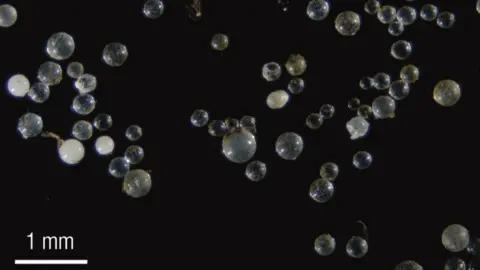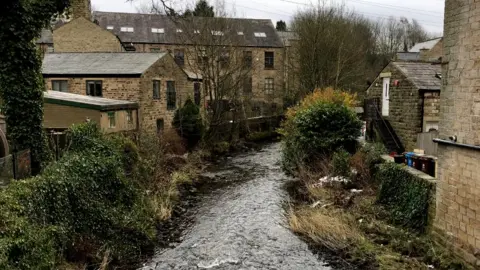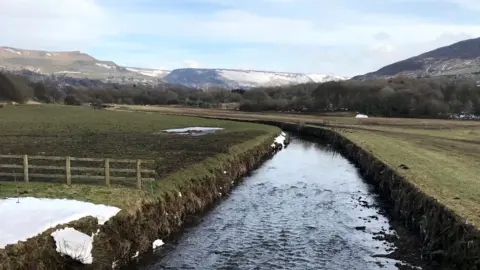Microplastics are 'littering' riverbeds
Microscopic plastic beads, fragments and fibres are littering riverbeds across the UK - from rural streams to urban waterways.
This is according to a study that analysed sediments from rivers in north-west England.
Scientists from the University of Manchester tested river sediments at 40 sites throughout Greater Manchester and found "microplastics everywhere".
There is evidence that such small particles can enter the food chain.
 Jamie Woodward
Jamie WoodwardThe findings, published in the journal Nature Geoscience, are the first from a "systematic basin-wide" study, the researchers say.
In a first round of tests, just one of the sites - in the upper reaches of the River Goyt, which is one of the tributaries of the River Mersey - contained no plastic. But when the researchers returned to that site to repeat their test, that area had become contaminated.
"I think that it is likely that there are even higher concentrations in some of the large rivers passing through global megacities," said lead researcher Dr Rachel Hurley.
"We just need to get out there and see. We still don't know the full scale of the microplastic problem," she told BBC News.
"Wherever you have people and industry, you will have high levels of microplastic," added Prof Jamie Woodward, from Manchester University's School of Geography.
'Plastic hotspots'
 J Woodward
J WoodwardTo analyse river sediments, researchers isolated patches of riverbed and measured the concentration within those patches.
Some urban "hotspots" contained hundreds of thousands of plastic particles per square metre. This included a site at the River Tame in Denton - a downstream, suburban stretch of river - that contained more than half a million plastic particles per square metre.
"According to our literature search on microplastics in the ocean, in sediments on beaches, in lakes - and the small amount of data on rivers elsewhere - this is currently the highest concentration found anywhere," said Prof Woodward.
The scientists now want to investigate the specific sources of the plastic fibres, microbeads and fragments they found.
One recent study in the US linked wastewater treatment plants with the release of plastic into the environment. And the scientists think that wastewater is likely to make a large contribution - particularly of microfibres from synthetic clothing and microbeads.
"We welcomed the ban on microbeads in personal care products introduced earlier this year," said Prof Woodward. "And we want to monitor the effect of that ban.
"But microbeads are also used in industrial processes - in the moulding of larger plastic products. So there are likely to be multiple sources.
"In urban environments, microplastics may come from wastewater and sewer systems, from plastic litter that is broken up and fragmented, and even from the air. Sources may not be active all of the time, so they are difficult to track - but we are working on it!" said Dr Hurley.
Flushed by flooding
 Jamie Woodward
Jamie WoodwardThe researchers gathered their first set of samples prior to the winter floods of 2015 and 2016. That extreme flooding was particularly severe in their river system - when weeks of heavy rain wreaked havoc in northern England, Northern Ireland and parts of Wales.
The team returned to the sites to see if the levels of plastic had changed. This revealed that the floods had "flushed out" approximately 70% of the microplastics stored in these riverbeds, equivalent to almost a tonne of plastic, or nearly 50 billion particles. It also eradicated microbead contamination at seven sites.
So the rivers are able to "cleanse themselves", the researchers explained. But, as Prof Woodward pointed out, "all of that will ultimately end up in the ocean".
Dr James Rothwell added that, since many of the particles this study detected were so small, they would simply slip through the filtration nets that are used, as standard, to sift microplastics out of the ocean.
"The implications of that are that we might well be underestimating by several orders of magnitude how much microplastic is in the oceans that has been delivered by rivers - flushed out during flood events," he said.
